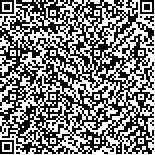戴有勇,严国强,石珊,等.经颅直流电刺激对认知损害模型大鼠学习、记忆功能的影响[J].中华物理医学与康复杂志,2023,45(1):1-5
扫码阅读全文

|
| 经颅直流电刺激对认知损害模型大鼠学习、记忆功能的影响 |
|
| |
| DOI:10.3760/cma.j.issn.0254-1424.2023.01.001 |
| 中文关键词: 经颅直流电刺激 海马皮质厚度 认知损害 学习记忆 大鼠 |
| 英文关键词: Transcranial direct current stimulation Hippocampal cortex Cognitive impairment Learning Memory |
| 基金项目:国家重点研发计划资助(2020YFC2005700) |
|
| 摘要点击次数: 5119 |
| 全文下载次数: 5022 |
| 中文摘要: |
| 目的 观察经颅直流电刺激(tDCS)对认知损害模型大鼠学习、记忆能力及海马皮质神经细胞形态的影响,并探讨大鼠认知功能损害行为学特征与海马CA1区颗粒层厚度的相关性。 方法 采用随机数字表法将30只SD大鼠分为观察组、模型组及对照组,每组10只大鼠。通过腹腔注射东莨菪碱将观察组、模型组大鼠制成认知损害动物模型,对照组大鼠则同期注射生理盐水。制模后观察组大鼠给予tDCS干预,模型组、对照组大鼠电极放置方法同观察组,但期间不予电刺激,3组大鼠均连续干预16 d。待干预结束后采用穿梭箱及Morris水迷宫实验检测各组大鼠行为学变化;于制模后第30天时各组大鼠均断头取脑,观察其海马及皮质神经元形态学改变,同时测量海马颗粒层厚度。 结果 干预后观察组被电击次数[(60.5±6.67)次/min]较模型组[(145.8±19.31)次/min]显著减少(P<0.05),寻找平台时间[(50.4±3.68)s]较模型组[(91.9±3.09)s]显著缩短(P<0.05),穿越D象限平台次数[(23.3±3.56)次/分]较模型组[(15.3±3.43)次/分]显著增加(P<0.05)。与对照组比较,模型组海马CA1区颗粒层厚度[(93.47±1.07)μm]显著减少(P<0.05);与模型组比较,观察组海马CA1区颗粒层厚度[(95.17±1.49)μm]明显增加(P<0.05)。经相关性分析发现,实验大鼠海马CA1区颗粒层厚度与被电击次数、寻找平台时间具有负相关性(P<0.05),与穿越D象限平台次数具有正相关性(P<0.05)。 结论 腹腔注射东莨菪碱能导致大鼠认知功能受损,其受损程度可能与海马CA1区颗粒层厚度具有一定相关性;tDCS可改善认识损害模型大鼠学习、记忆功能,其作用机制可能与促进海马皮质神经元结构恢复、增加海马颗粒层厚度有关。 |
| 英文摘要: |
| Objective To observe any effect of transcranial direct current stimulation (tDCS) on learning, memory ability and the morphology of neurons in the hippocampus and cortex of rats with cognitive impairment, and also to seek any correlation between the rats′ behavior and the thickness of the granular layer in the CA1 region of the hippocampus. Methods Thirty Sprague-Dawley rats were randomly divided into an observation group, a model group and a control group, each of 10. Cognitive impairment was induced in the observation and model groups by intraperitoneal injection of scopolamine, while the control group was injected with saline solution over the same period of time. After successful modeling, the observation group was given tDCS, while the model and control groups were connected with electrodes but not given any electrical stimulation. After 16 consecutive days of treatment, behavioral changes of each group were quantified using a shuttle box and a Morris water maze. On the 30th day after the mode-ling, the brains were collected to observe any changes in the morphology of the hippocampal and cortical neurons. The thickness of the hippocampal granular layer was also measured. Results In the observation group the average rate of electrical impulses after the intervention [(60.5±6.67)/min] was significantly less than in the model group [(145.8±19.31)/min], while the time to find a platform was significantly shorter. The rats of the observation group also crossed the D quadrant of the platform significantly more quickly than the model group, on average. Compared with the control group, the granular layer in the CA1 region of the hippocampus [(93.47±1.07)μm] was significantly thinner on average than in the model group but compared with the model group, the observation group had significantly thicker layers [95.17±1.49)μm] on average. The thickness was negatively correlated with the number of shocks and the time to find the platform, but positively correlated with the number of crossings of the platform in the D quadrant. Conclusions The degree of impairment generated by intraperitoneal injection of scopolamine correlates with the thickness of the CA1 granular layer of the hippocampus, at least in rats. tDCS can improve the learning and memory of such rats. Its mechanism may be related to promoting structural recovery of hippocampal cortical neurons and increasing the thickness of the granular layer. |
|
查看全文
查看/发表评论 下载PDF阅读器 |
| 关闭 |
|
|
|